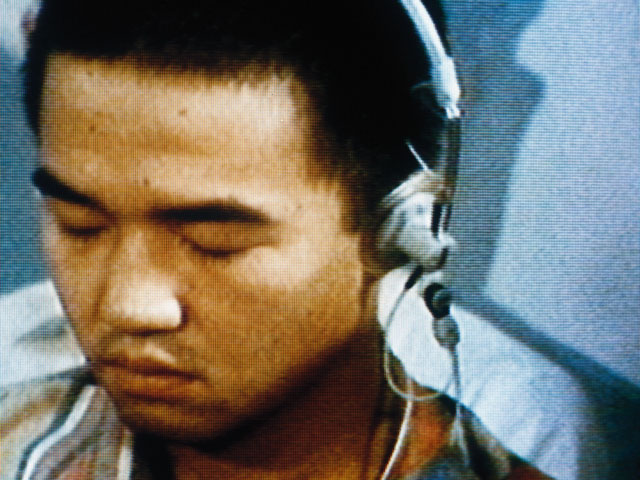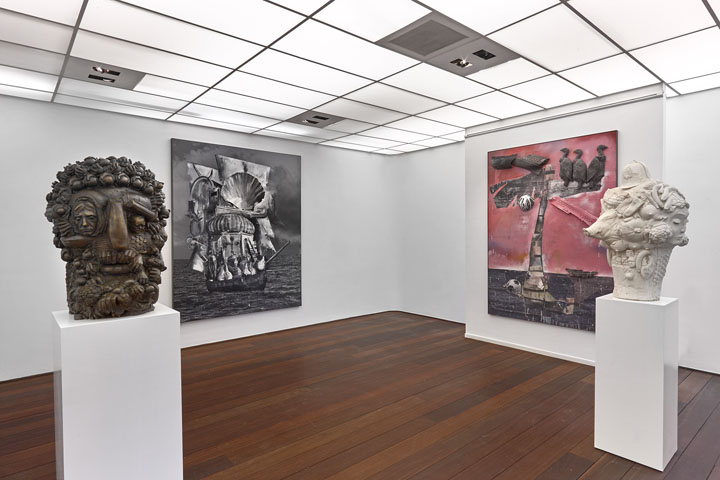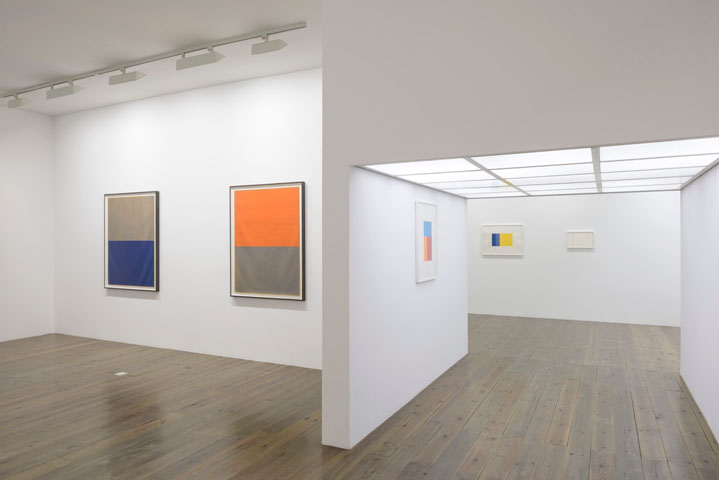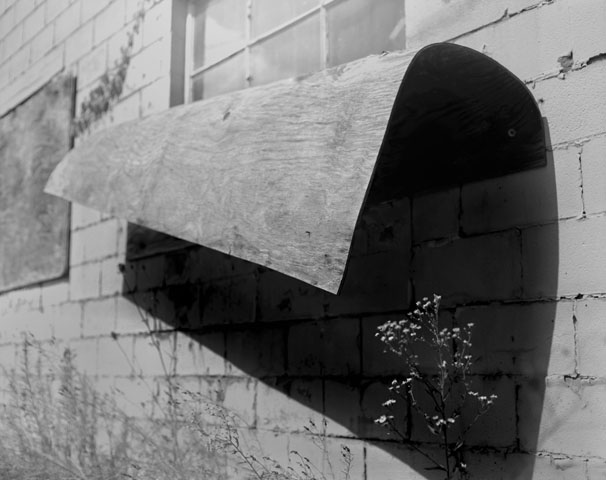Up in Smoke. The Amsterdam Art Weekend 2016, Part 1: Gallery Night
- Christian Hain
- Nov 30, 2016
- 7 min read
Updated: Mar 24, 2020
(Amsterdam.) I know what you’re thinking, and you’re right: Who would travel to Amsterdam, and not smoke weed? It’s like visiting Germany and not drive on the Autobahn, or moving to the US and not buy a gun. What kind of moron would do this?
Well, in my case, a moron plagued with a major bronchitis. It kind of spoilt things. I had even booked a bunk at the Bulldog Hostel in the heart of the Red Light District. In the end, I visited their coffeeshop but twice, for a cup of tea and a Heineken, respectively. The main reason for my journey of course was art, and as things turned out, I could fully focus on that, beside coughing and overall suffering (come on, show some compassion).
Amsterdam Art Weekend is celebrated every year in the end of November. It’s like the Berlin Gallery Weekend with the addition of non-dealing institutions. After some preliminaries on Wednesday and Thursday, a first highlight was the Gallery Night on Friday. That’s when I arrived.
The daily train for commuting drug dealers takes six hours from Berlin to Amsterdam central station, and it's less surveilled than you would expect. Contrary to rumours, there are no strip-searches in either direction. You could easily bring a d̶o̶g̶g̶y̶ druggy bag home (your responsibility, not mine). The trip puts you in the right mood, and a smile on your face. Even the sun came out at the border - in Berlin you almost forget there is such a curious thing hiding beyond the big grey above. Looking out the window, the mind covers all lakes, and there are a lot, with ice and skaters, Bruegel style. The Dutch are known to be a welcoming people, even their houses look friendly, and the language sounds so incredibly cute, like how you talk to a child when mimicking a cartoon animal. On arrival, the way from the main station to my hostel was easy to find, and not knowing Amsterdam, I thought, “it’s not that big, I will just walk everywhere”. Big mistake.
Walking down to Leidseplein, it’s difficult not to get high from all the smoke around. It’s everywhere, in and out of every cafe, store, school or retirement home. Maybe this contributed to the impression: Amsterdam is beautiful. I did not even mind walking half an hour in the wrong direction, or not much, after searching for the Amsterdam Art Weekend Info Point at Stadsschouwburg theatre. There was nothing on the outside hinting at the event, and eventually I just took some leaflet catalogues from the theatre’s cash desk. Turning around to find a route through the canals and streets, my phone’s GPS left on a long vacation, it always does when I need it, empirical fact.
The distances are small in Amsterdam. If you take the heli. For us non art collectors, it’s different. There is hardly a street following a straight line for more than ten metres, there are countless side streets, backstreets, passageways and alleyways, not to mention the canals. It’s impossible not to get lost. Maybe that’s what the drugs are for: A labyrinthian mind to find your way - with the right attitude, there’s always more than one, more than a hundred, ways, anywhere. A detailed map of Amsterdam looks like a web woven by a routinely drugged out spider. What Amsterdam lacks most, are street signs, and house numbers. Somebody should start a crowdfunding. “Is this Kerkstraat, or Kaizergracht?” “How many channels have I crossed in the past ten minutes?” Another ten minutes later, and only thanks to a small business having put a paper with their address in the window, you realize it’s Prinsengracht. But sudden- and finally you espy a numbered Art Weekend flag, and a gallery indeed. Once you continue walking, you will use the map in the AAW catalogue, the one you did not throw into a canal, only to mark places you have already visited.
Amsterdam is not known to be a top destination of the international art scene, and that’s for a reason. The public is well aware of it, too. In most galleries, there were only a few visitors. There were exceptions, but crowded? No, nowhere. So what about the art? Well, there are highlights. One is Marcus Harvey, ex YBA, now Middle-Aged BA, who baptized his show Shipbuilding (Reflex Amsterdam Gallery), and it’s hard not to think of his almost namesake Marcus Garvey (and that Elvis Costello song). Marcus Garvey, you might recall, was an African American activist of the early twentieth Century who founded the Black Star Line to ship black americans to the lands where their ancestors had been kidnapped from. Today, the Black Star Line’s logo lives on in the flag of Ghana, and Marcus Garvey’s project in the minds of the KKK. But back to Marcus Harvey and his sculptures and paintings with thick pieces of colour protruding from the canvas. Officially, they deal with stereotypes about the artist’s own country, Britain. But footballs and palm trees might also point to the colonial past and its effects on the present. In any case, Shipbuilding is better than the genuinely Africa-themed show of Georges Adéagbo (Benin) and Otobong Nkangba (Nigeria) at Lumen Travo Gallery with a collection of objects and press articles.
Johan Grimonprez likes hijackers. His slightly famous film Dial H-I-S-T-O-R-Y starts from a thought about terrorists’ screentime, and their media presence making novelists obsolete (yes, I did not get that either. Would not rather movie and more traditional TV stars be the natural rivals? And is it not the abolition of text, culture and emotion in a unified world that makes storytelling unwished for today?). At Flatland Gallery, Grimonprez portrays different hijackers from Marxist Japanese to Marxist, and later Islamic, Arabs (from Hijackers to Hijab-ers so to say). Petty criminals like DB Cooper - who arguably make for the best stories – interest him less. I really wanted him to Stockholm-syndrome me with his show. But he didn’t. There’s something amiss, the works are quite easy, that film, portrait photos with a short description of the individual background story. Yes, it’s nice to be reminded, Benyamin Netanyahu was personally part of a special ops team killing off some Palestinians in 1972. But is the mere fact enough to carry an artwork? Also, a strange smell of dirty diapers throughout the gallery distracted from the works. It did not emanate from the dealer’s dogs and their bed in one of the exhibition rooms.
Akinci Gallery was number one on the alphabetical list in the catalogue. It had announced a performance. This turned out to be a perfume distiller distilling perfume (that's whats it was, right?). It was still the best work. The rest consisted of actual nutshells and a painted white rectangle on the floor, minimalist papers on the walls, framed travel insurance documents, a lectern and a chair, a fake Fred Sandbaek string in a corner, and dried leaves. All very conceptual. So conceptual indeed, you do not need to see it. Just read the press release and you know it all. There is nothing the works could add to the experience, they are superfluous.
Slewe Gallery hosts a group show of abstract painters with works on paper, and - very eco-friendly – offers no takeaway texts. Callum Innes is the best known name here, but he also brought the least imaginative works (he might be more interesting, if there had never been a Mark Rothko, and that’s still offensive to the American legend). Dan Walsh and Paul Drissen are much better and the true reason to visit!
Take a break in a bar, order a cup of tea, notice there are no prices displayed, for nothing, not even in the menu. Be glad, the barman only charges you two Euros, and confuse him with an overenthusiastic “Thank you!” before paying, then continue the tour.
Borzo was the first gallery where I did not feel like an intruder, alone with the dealer and his assistant. There were other people visiting at the same time as me! Some at least. The paintings on show are not bad. Dreamy, sometimes photorealist, not saying there were not thousands of other artists doing the same stuff, but Koen Vermeule is good at what he does. A Marc Desgrandchamps influence, maybe? Fernando Sánchez Castillo Tlatelolco at Tegenboschvanvreden deals with the police shooting of some annoying students as part of the preparations for the 1968 Mexico City Olympics, in drawings, film, sculpture, not bulletproof coins, and a carpet. Wait: Tlatelolco is the name of the show! It’s ok. Ornis A. Gallery shows very unobtrusive, quiet paintings of Jasper Hagenaar, and they are particularly proud of a pair of hands that unsurprisingly does not come close to Rembrandt. Poppy pop art with nipples and fake Pollocks at Fons Welters was less interesting. But then: Wouter van Leeuwen Gallery and Raymond Meeks with poetry in photo and some texts. Loved it! Finally a great show! Go there!
Then, there are the "parasites" who participate without an invitation, like at any gallery festival. De Witte Voet shows earthenware, and apparently an artist had just finished producing prints right on the spot when I entered. This was not in AAW’s official selection, but definitely not worse. Decorative, yet fine.
Time for another break. Maybe it’s racist, but when an oriental (Indian!) looking person at a build-your-own-falafel streetfood shop tells you, “that sauce is very spicy”, you better believe it.
Kunstverein had more mirrors than art, there was kitsch in painting at Stigter van Doesburg, and homosexual soft porn about Langston Hughes at Ron Mandos Gallery. Torch Gallery, a one artist gallery that somehow managed to get into the circuit, tried it with “sex sells”, but I doubt it worked out for them; once again I was the sole visitor. Many more galleries I've visited on that gallery night, and the morning after, but you’re starting to get bored, are you not?
In that last gallery, I had an idea: “Maybe I should visit the Red Light District after all?” So I did, and it’s an incredible sight, crowds of tourists, hen and stag parties, families &c. meandering through the streets, window-shopping, drinking, and joking. If the fashion style of the ladies behind those windows is based on elaborate market research studies, eighty-five per cent of you, dear male readers, are into horn-rims. This trend has somehow escaped me before. On a side note, a white dealer mistook me for a copper because I approached the closed Japanese restaurant next to his open air office and read the menu, honestly preferring ramen to roofies. Seconds later, three black apprentice dealers followed me close, yelling “Politie!? Politie?!” (in case you wonder: hard drugs are illegal even in Amsterdam, although on offer everywhere). As I looked back over my shoulder, the bald white boss was gone. I’m deeply sorry for having been a nuisance to his business.
And then, there were the institutions... (to be continued.)
Amsterdam Art Weekend 2016, 24-27 November 2016, Amsterdam
World of Arts Magazine - Contemporary Art Criticism








Comments